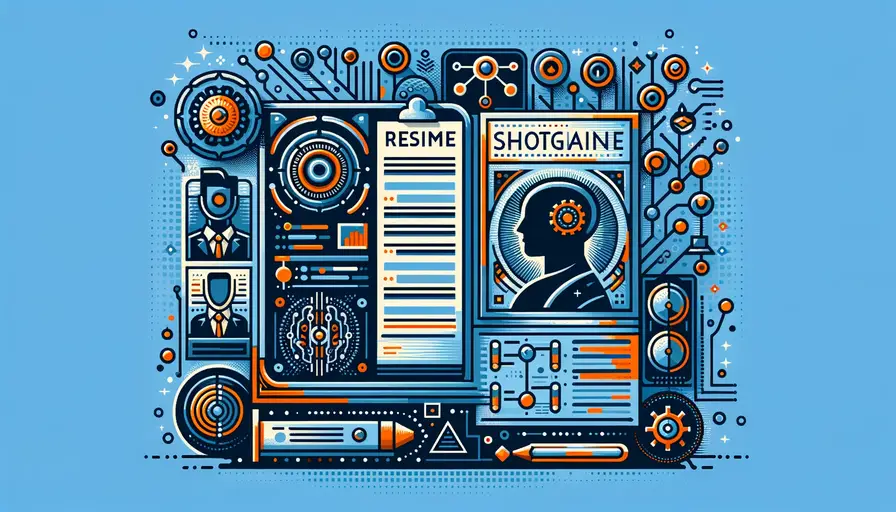
Showcasing Machine Learning Projects on Your Resume

In today's competitive job market, showcasing your machine learning projects on your resume is crucial to stand out to potential employers. Demonstrating practical experience with machine learning (ML) projects not only highlights your technical skills but also your ability to apply those skills to real-world problems. This guide will explore how to effectively present your machine learning projects on your resume, emphasizing key elements and providing examples to help you craft a compelling narrative for your job applications.
Highlighting Key Machine Learning Projects
Choosing Relevant Projects
When selecting projects to include on your resume, it's important to choose those that are most relevant to the job you are applying for. Focus on projects that showcase your expertise in the tools and techniques required for the role. Highlight projects where you applied advanced machine learning algorithms, handled large datasets, or worked on innovative applications.
For instance, if you are applying for a role that emphasizes deep learning, feature projects where you used neural networks and related techniques. Similarly, for a role focused on data science, include projects involving data cleaning, exploratory data analysis, and predictive modeling.
Example:
Can Machine Learning Unlock the Secrets of Quantum Theory?**Project: Image Classification using Convolutional Neural Networks (CNNs)**
- Developed an image classification model using CNNs to categorize images from the CIFAR-10 dataset.
- Achieved 92% accuracy by implementing data augmentation techniques and optimizing hyperparameters.
- Utilized TensorFlow and Keras for model development and training, and visualized results with Matplotlib.Detailing Your Role and Contributions
Clearly articulate your role and contributions in each project. Employers are interested in understanding what you specifically did and how you added value. Use action verbs and quantifiable metrics to describe your work. Mention any innovative solutions you implemented, challenges you overcame, and the impact of your work.
Highlighting your role helps recruiters understand your hands-on experience and your ability to work independently or as part of a team. It also demonstrates your problem-solving skills and technical proficiency.
Example:
**Project: Predictive Maintenance using Machine Learning**
- Led a team of three in developing a predictive maintenance model for industrial equipment.
- Designed and implemented a random forest classifier to predict equipment failures based on historical sensor data.
- Improved prediction accuracy by 15% through feature engineering and hyperparameter tuning.
- Used Python libraries such as Pandas, Scikit-learn, and Seaborn for data processing, model training, and visualization.Emphasizing Technical Skills
Emphasize the technical skills you applied in your projects. Mention the programming languages, libraries, frameworks, and tools you used. This not only highlights your technical proficiency but also aligns your skills with the requirements of the job.
Machine Learning Without Training DataIncluding technical details gives recruiters a clear picture of your capabilities and ensures that your resume passes through applicant tracking systems (ATS) that scan for specific keywords.
Example:
**Project: Natural Language Processing (NLP) for Sentiment Analysis**
- Developed an NLP pipeline to perform sentiment analysis on customer reviews.
- Used NLTK and SpaCy for text preprocessing, including tokenization, lemmatization, and stop-word removal.
- Built and trained a logistic regression model using Scikit-learn to classify reviews as positive or negative.
- Achieved 88% accuracy and deployed the model as a REST API using Flask.Structuring Your Resume for Impact
Creating a Projects Section
Dedicate a section of your resume specifically to projects. This makes it easy for recruiters to find and review your work. Organize this section by listing your projects in reverse chronological order, starting with the most recent or most relevant.
Ensure that each project entry includes the project title, a brief description, your role, the technologies used, and key achievements. Use bullet points for clarity and conciseness.
Essential Components of ML-Based Credit Card Fraud DetectionExample:
## Projects
**Image Classification using Convolutional Neural Networks (CNNs)**
- Developed an image classification model using CNNs to categorize images from the CIFAR-10 dataset.
- Achieved 92% accuracy by implementing data augmentation techniques and optimizing hyperparameters.
- Utilized TensorFlow and Keras for model development and training, and visualized results with Matplotlib.
**Predictive Maintenance using Machine Learning**
- Led a team of three in developing a predictive maintenance model for industrial equipment.
- Designed and implemented a random forest classifier to predict equipment failures based on historical sensor data.
- Improved prediction accuracy by 15% through feature engineering and hyperparameter tuning.
- Used Python libraries such as Pandas, Scikit-learn, and Seaborn for data processing, model training, and visualization.
**Natural Language Processing (NLP) for Sentiment Analysis**
- Developed an NLP pipeline to perform sentiment analysis on customer reviews.
- Used NLTK and SpaCy for text preprocessing, including tokenization, lemmatization, and stop-word removal.
- Built and trained a logistic regression model using Scikit-learn to classify reviews as positive or negative.
- Achieved 88% accuracy and deployed the model as a REST API using Flask.Including GitHub and Portfolio Links
Include links to your GitHub repository or personal portfolio where recruiters can view your project code and additional details. This adds credibility to your resume and demonstrates your commitment to open-source contributions and continuous learning.
Ensure that your GitHub repository is well-organized, with clear README files, detailed documentation, and properly structured code. Highlight any collaborative projects or contributions to popular repositories.
Example:
Is Machine Learning Capable of Predicting Lottery Numbers?## Projects
**Image Classification using Convolutional Neural Networks (CNNs)**
- Developed an image classification model using CNNs to categorize images from the CIFAR-10 dataset.
- Achieved 92% accuracy by implementing data augmentation techniques and optimizing hyperparameters.
- Utilized TensorFlow and Keras for model development and training, and visualized results with Matplotlib.
- [GitHub Repository](https://github.com/username/image-classification-cnn)
**Predictive Maintenance using Machine Learning**
- Led a team of three in developing a predictive maintenance model for industrial equipment.
- Designed and implemented a random forest classifier to predict equipment failures based on historical sensor data.
- Improved prediction accuracy by 15% through feature engineering and hyperparameter tuning.
- Used Python libraries such as Pandas, Scikit-learn, and Seaborn for data processing, model training, and visualization.
- [GitHub Repository](https://github.com/username/predictive-maintenance)
**Natural Language Processing (NLP) for Sentiment Analysis**
- Developed an NLP pipeline to perform sentiment analysis on customer reviews.
- Used NLTK and SpaCy for text preprocessing, including tokenization, lemmatization, and stop-word removal.
- Built and trained a logistic regression model using Scikit-learn to classify reviews as positive or negative.
- Achieved 88% accuracy and deployed the model as a REST API using Flask.
- [GitHub Repository](https://github.com/username/sentiment-analysis-nlp)Tailoring Your Resume for Each Job Application
Tailoring your resume for each job application significantly increases your chances of getting noticed. Carefully read the job description and highlight the skills and experiences that match the requirements. Adjust the order of your projects to emphasize the most relevant ones and tweak the descriptions to align with the job's responsibilities.
Personalizing your resume demonstrates your genuine interest in the position and your understanding of the employer's needs. It also helps you stand out from generic resumes that do not cater to specific job requirements.
Example:
## Projects
**Deep Learning for Medical Image Analysis**
- Developed a deep learning model using CNNs to detect pneumonia from chest X-ray images.
- Achieved 95% accuracy and reduced false negatives by 20% through advanced image preprocessing techniques.
- Utilized TensorFlow and Keras for model development and training, and deployed the model using TensorFlow Serving.
- [GitHub Repository](https://github.com/username/medical-image-analysis)
**Time Series Forecasting for Stock Prices**
- Created a time series forecasting model to predict stock prices using ARIMA and LSTM networks.
- Improved forecast accuracy by 12% through feature engineering and hyperparameter optimization.
- Employed Python libraries such as Pandas, NumPy, and Statsmodels for data analysis and model building.
- [GitHub Repository](https://github.com/username/stock-price-forecasting)
**Recommender System for E-commerce**
- Built a collaborative filtering recommender system to suggest products to users based on their purchase history.
- Increased recommendation accuracy by 18% using matrix factorization and hybrid filtering techniques.
- Implemented the system using Python and deployed it as a web application using Flask and Heroku.
- [GitHub Repository](https://github.com/username/recommender-system)Emphasizing Problem-Solving and Impact
Showcasing Problem-Solving Skills
Employers value candidates who can effectively solve problems using machine learning techniques. Highlight projects where you identified a problem, proposed a solution, and implemented an ML model to address the issue. Focus on the challenges you faced, the methods you used to overcome them, and the results you achieved.
Exploring the Most Popular Dataset for Deep Learning Neural NetworksDemonstrating problem-solving skills showcases your ability to apply theoretical knowledge to practical scenarios, a key competency in machine learning roles.
Example:
**Project: Fraud Detection in Financial Transactions**
- Identified the problem of increasing fraudulent transactions in a financial dataset.
- Proposed and implemented a machine learning model using gradient boosting to detect fraud.
- Faced challenges with imbalanced data and addressed them by applying SMOTE for data resampling.
- Achieved a 92% F1-score and significantly reduced the number of false positives.
- [GitHub Repository](https://github.com/username/fraud-detection)Quantifying Impact and Results
Quantifying the impact of your work adds credibility to your resume. Use metrics to describe the outcomes of your projects, such as accuracy, precision, recall, F1-score, or any other relevant performance indicators. Mention the business or social impact of your work, such as cost savings, revenue increase, or improved user experience.
Quantifiable results demonstrate the effectiveness of your solutions and your ability to deliver measurable improvements.
Machine Learning: Enabling Speech to Text ConversionExample:
**Project: Customer Churn Prediction**
- Developed a machine learning model to predict customer churn for a telecom company.
- Achieved 89% accuracy and 85% precision by implementing a random forest classifier.
- The model's predictions enabled targeted retention strategies, resulting in a 15% reduction in churn rate.
- [GitHub Repository](https://github.com/username/churn-prediction)Demonstrating End-to-End Project Execution
Showcasing end-to-end project execution illustrates your comprehensive understanding of the machine learning lifecycle. Highlight projects where you were involved in every stage, from data collection and preprocessing to model deployment and monitoring. This demonstrates your ability to manage complex projects and deliver complete solutions.
Employers appreciate candidates who can take ownership of projects and see them through to completion, ensuring that models are not only built but also effectively integrated into production environments.
Example:
**Project: Automated Email Classification System**
- Collected and labeled a dataset of emails for classification into spam and non-spam categories.
- Preprocessed text data using NLP techniques such as tokenization, stop-word removal, and TF-IDF vectorization.
- Trained a Naive Bayes classifier and achieved 90% accuracy in classifying emails.
- Deployed the model as a REST API using Flask, enabling real-time email classification.
- Monitored model performance and retrained periodically to maintain accuracy.
- [GitHub Repository](https://github.com/username/email-classification)Effectively showcasing your machine learning projects on your resume can significantly enhance your job prospects. By choosing relevant projects, detailing your role and contributions, emphasizing technical skills, and quantifying the impact of your work, you can create a compelling resume that stands out to potential employers. Tailoring your resume for each job application and demonstrating your problem-solving abilities and end-to-end project execution further strengthen your candidacy. With these strategies, you can confidently present your machine learning expertise and secure the opportunities you seek in the competitive job market.
If you want to read more articles similar to Showcasing Machine Learning Projects on Your Resume, you can visit the Applications category.



You Must Read